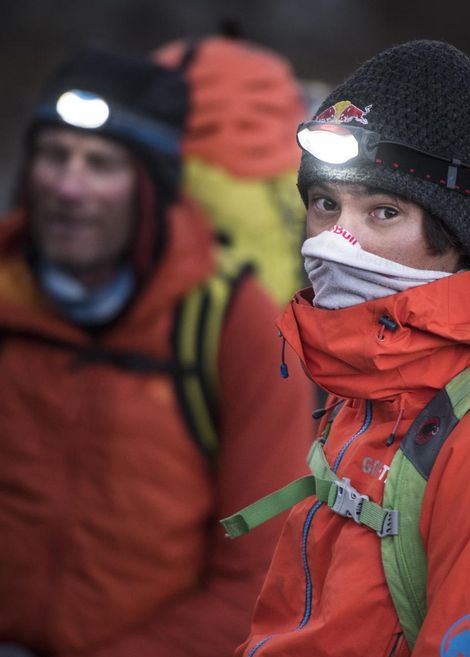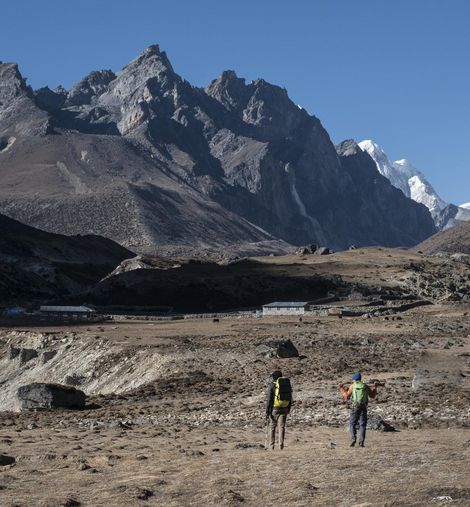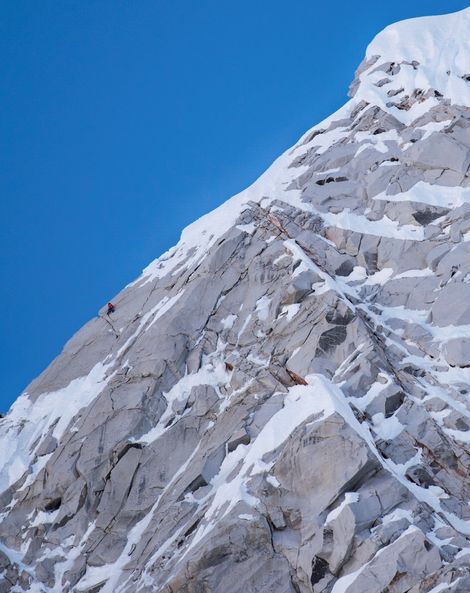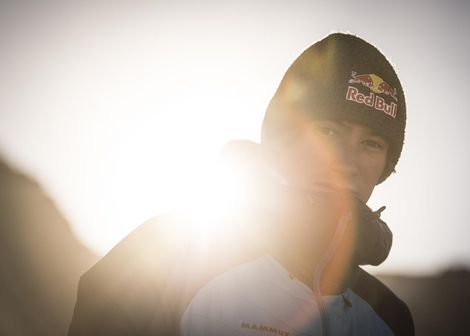To the limit on Lunag Ri
Interview by Ben Lepesant
David is back from Lunag Ri, the unclimbed 6907 meters high mountain in Nepal. In 2015 he had come close to the summit with his American climbing partner Conrad Anker. The two had worked together very well on their first Himalayan expedition, and wanted to give it another try in late fall 2016. They were optimistic that they would succeed on their second attempt. It was supposed to be an expedition with few unknowns. The plan was to finish a project, but then everything came very differently.
How did the second round on Lunag Ri with Conrad Anker go?
David: Given that we failed last year, we were pretty sure that we had a good idea of what to expect. Now that I am back home, I can say: we were wrong. Everything went well during acclimatisation, and Conrad and I started climbing up the line we had already tried last year. We wanted to climb to the summit over three days and planned for an extra day to descend. At first, things went perfectly. I led, while Conrad followed with the heavy pack. At around 5700 meters, I noticed that something was wrong. Conrad became slower and slower, and once he had arrived at the belay, he had to lean against the rock and said he felt intense pain in his chest.
Was it altitude sickness?
We excluded the possibility of him being altitude sick quite quickly due to the symptoms. Conrad initially wanted to fight through and wait for one night. Given his intense pain, I pressed for an immediate descent. When we reached our advanced basecamp, Conrad was still not feeling better. We called for a rescue, and a helicopter took Conrad to Kathmandu two hours later.
What happened next?
In Kathmandu, Conrad was diagnosed with
a heart attack, and immediately received surgery.
I remained in basecamp.
In the end, you made a solo attempt of Lunag Ri.
Just before leaving, Conrad told me that he would not return to Lunag Ri, and left me with the option to try it on my own.
I thought about every last detail and gave myself a fair chance to reach the summit. Three days later, I left at night and started up a more direct line.
How was the first day on the wall?
I climbed ropeless on steep snow and ice flancs to right below the north west ridge. In the early morning I found a good bivy spot. I was at approximately 6200 meters, so there were about 700 meters left to the summit, but I knew that the terrain was getting more difficult and that the increasing altitude would make the climbing more strenuous.
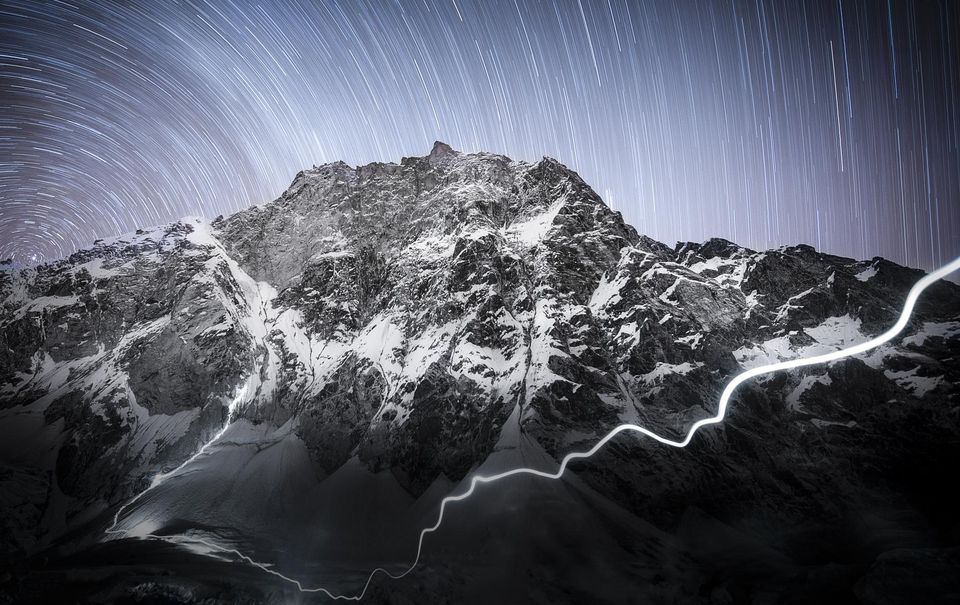
You couldn't keep your pace. How did the second day go?
I started around 2 am and climbed a few hundred meters in complete darkness. When it became light, I was already climbing on the north west ridge. The terrain got more and more difficult and dictated the rhythm. Solo climbing is not always the same thing: as long as you don't belay, you are fast. Once you start belaying yourself, it becomes complex and you have to do every meter twice.
How does this work exactly? How do you belay yourself?
The end of the rope gets fixed to the belay. While leading, the "belay device" is attached to the climber's harness, and you give yourself rope. In case of a fall, the belay device would stop the fall, you would fall as far as you would if you were on belay with a partner. Once you set up the belay after leading, you have to rappel to the lower belay to remove it and the backpack. Then you re-climb the pitch along the now fixed rope and remove the gear placed on lead before. Then you continue up, leading again. There is no break during which your partner would do something. You are always toiling.
How did you feel when you arrived at your second bivy?
I had reached a state of utter exhaustion. I was only 250 meters below the summit, but I had to accept that I couldn't continue - neither up, nor down. I put my tent on a little flat spot on the ridge and spent the night there. The next morning, I began the descent. It was toilsome and long-winded. After a few hours, rock- and ice fall became quite a problem and I had to wait for the night until I could rappel further.
Are you annoyed to have failed again?
Of course, I would have liked to stand on the summit, but things don't always go exactly as you wish. Due to Conrad's heart attack, the circumstances changed in a way no one could have foreseen, and the solo attempt was full-on and a very rich experience. In the end, I was just happy to be back down.
How is Conrad doing? Will you return to Lunag Ri?
Conrad has recovered from his surgery and is doing well. He is back climbing, but he says that it is time for him to withdraw from more demanding expeditions.
I will return to Nepal in fall, not to Lunag Ri, but to Annapurna III, a mountain I tried last year in spring. Lunag Ri is not one of alpinism's greatest unsolved problems, but over the last two years, and in particular this last expedition, it has become more and more interesting to me, and I can image trying it again.
